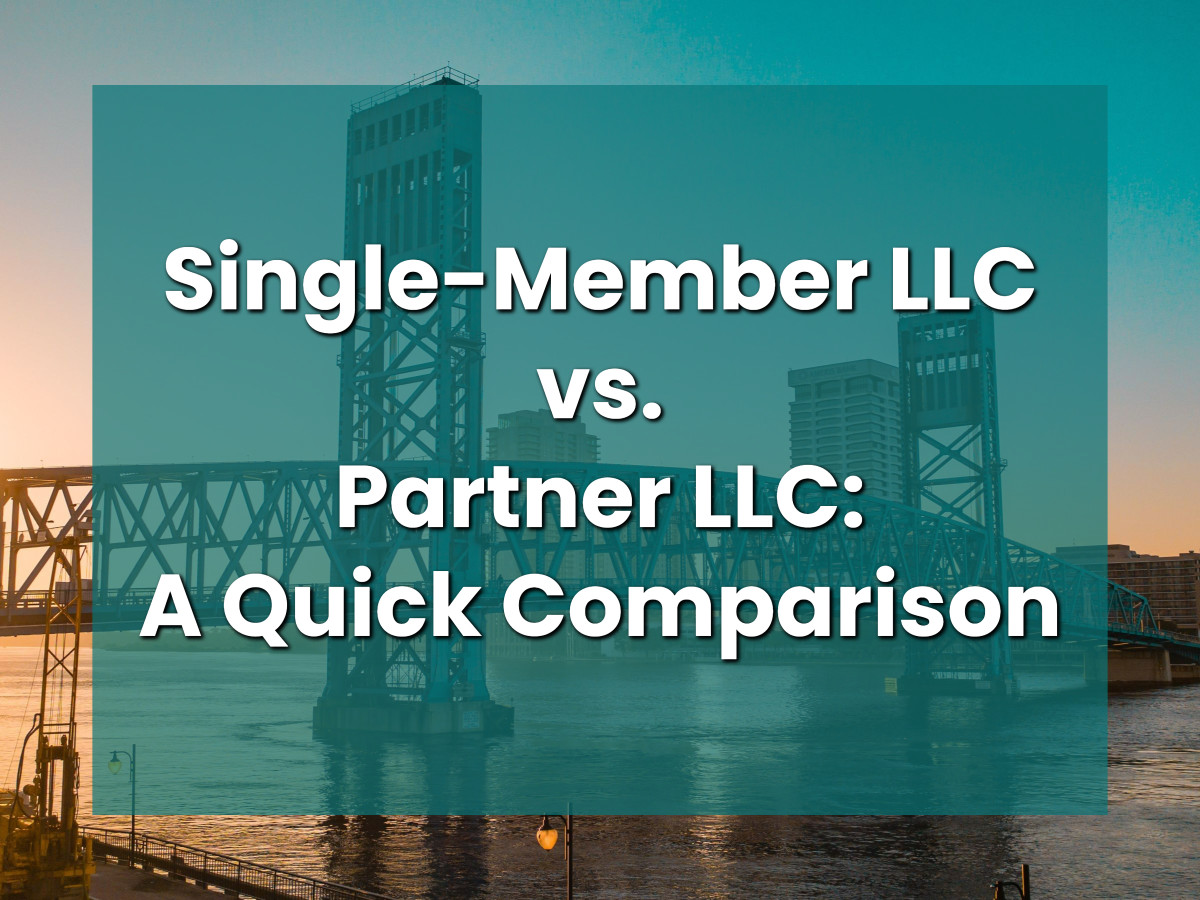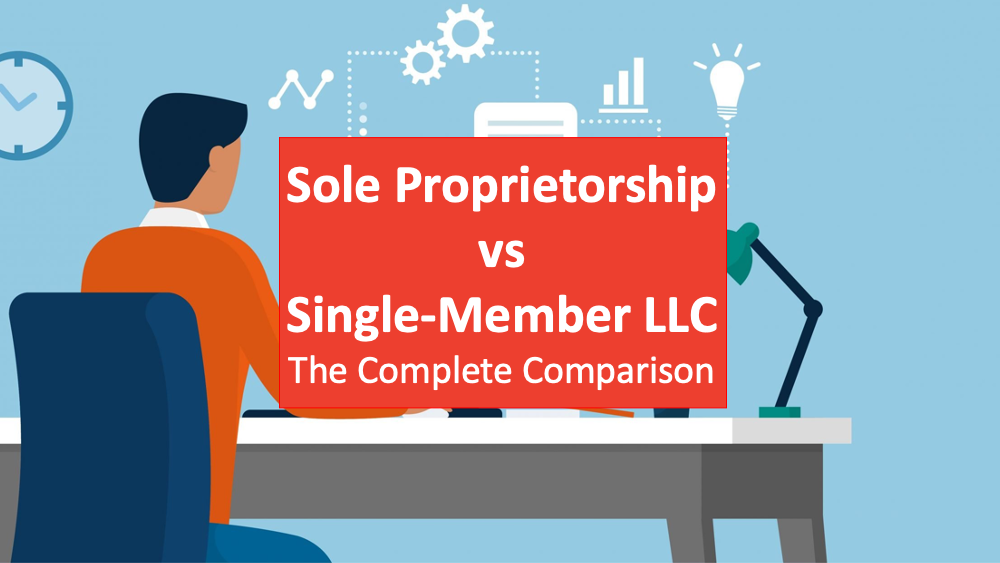When starting a business, one of the key decisions you need to make is the structure of your company. While there are various options available, two popular choices for small and medium-sized businesses are Single-Member LLC and Partner LLC. In this article, we will delve into the differences between these two types of LLCs, explore their respective benefits and disadvantages, discuss tax obligations, and help you determine which structure may be best suited for your business.
Understanding the Limited Liability Company (LLC)
Before we dive into the specifics of Single-Member LLC and Partner LLC, let’s first understand the concept of a Limited Liability Company. The LLC is a business structure that combines the benefits of a corporation and a partnership while offering limited personal liability to its owners. It provides the flexibility and simplicity of a partnership while protecting the personal assets of its members.
The LLC business entity type gained popularity in the United States after its introduction in Wyoming in 1977. Since then, it has become a preferred choice for startups and small businesses due to its tax and legal advantages.

Single-Member LLC: Definition, Benefits, and Disadvantages
A Single-Member LLC, also known as a 1-person LLC, is a business structure with only one owner. Unlike a traditional partnership, a single-member LLC allows individuals to enjoy the benefits of a partnership without additional members. Let’s explore the definition, benefits, and disadvantages of a single-member LLC.
Definition of Single-Member LLC
A Single-Member LLC is a legal entity that provides liability protection while keeping things simple for its owner. It allows individuals to operate a business on their own, without the need for additional partners or shareholders. As the sole owner, you have complete control over the business and retain all the profits.
Benefits of Single-Member LLC
There are several advantages to choosing a single-member LLC for your business:
-
Simplified Taxation: One of the major benefits of a single-member LLC is simplified taxation. As the sole owner, you do not need to file corporate taxes in addition to personal income tax. The profits and losses of the LLC are reported on your personal tax return using a Schedule C form.
-
Liability Protection: Similar to other LLC structures, a single-member LLC provides limited liability protection. This means that your personal assets are shielded from the debts and obligations incurred by the business. In the event of legal issues or financial difficulties, your personal assets are generally protected.
-
Flexibility: Operating as a single-member LLC provides flexibility in decision-making and business operations. You have the freedom to make decisions without the need for consensus from partners or shareholders. This can be particularly advantageous if you prefer to have complete control over your business.
-
Ease of Formation: Starting a single-member LLC is relatively simple and requires fewer formalities compared to other business structures. The process typically involves registering with the appropriate state authorities and obtaining the necessary licenses and permits.
Disadvantages of Single-Member LLC
While there are numerous benefits to a single-member LLC, it’s important to consider the potential drawbacks:
-
Personal Liability: As the sole owner of a single-member LLC, you are personally liable for all the debts and obligations of the business. If the company faces financial difficulties or legal issues, your personal assets may be at risk.
-
Limited Funding Options: In some states, it may be more challenging to secure loans or financing as a single-member LLC. Lenders may be hesitant to provide funding when there is only one owner responsible for the debts.
-
Tax Considerations: While single-member LLCs offer simplified taxation, it’s essential to understand the tax implications. You are responsible for paying federal income tax, self-employment tax, and potentially state taxes, depending on your location. It’s recommended to consult with a tax professional to ensure compliance with all tax obligations.
-
Lack of Partnerships: Unlike a partner LLC, a single-member LLC does not have the opportunity to share profits and decision-making with other partners. If you value collaboration and input from multiple perspectives, a single-member LLC structure may not be the best fit for your business.
Partner LLC: Definition, Benefits, and Disadvantages

If you have business partners or investors, a Partner LLC may be a suitable structure for your company. Instead of being a sole owner, a partner LLC allows for multiple members to organize and operate the business together. Let’s explore the definition, benefits, and disadvantages of a partner LLC.
Definition of Partner LLC
A Partner LLC is formed when two or more members come together to establish a business. Members can be added or removed even after the LLC is formed, providing flexibility in ownership. Each member of the partner LLC shares the profits and losses of the business proportionately based on their financial contributions.
Benefits of Partner LLC
Choosing a partner LLC for your business can offer various advantages:
-
Shared Decision-Making: One of the primary benefits of a partner LLC is the shared decision-making among members. With multiple partners, you can benefit from diverse perspectives, skills, and expertise. This collaborative approach can enhance problem-solving and lead to more well-rounded decisions.
-
Tax Flexibility: A partner LLC offers tax flexibility by allowing members to be taxed as individuals. This means that the business itself is not required to pay employer taxes like a traditional corporation. Each member reports their share of profits and losses on their personal tax returns.
-
Liability Protection: Like a single-member LLC, a partner LLC provides limited liability protection to its members. This means that personal assets are generally shielded from business debts and obligations. The liability is typically limited to the member’s investment in the company.
-
Ease of Formation: Similar to a single-member LLC, a partner LLC is relatively easy to form and does not require extensive formalities. The process involves registering with the appropriate state authorities and establishing an operating agreement that outlines the rights and responsibilities of each member.
Disadvantages of Partner LLC
While a partner LLC offers numerous benefits, there are some potential disadvantages to consider:
-
Decision-Making Challenges: With multiple members involved in a partner LLC, reaching consensus on various business decisions can be challenging. Disagreements and conflicts may arise, which can slow down the decision-making process and hinder business operations.
-
Increased Complexity: Compared to a single-member LLC, a partner LLC involves more paperwork and formalities. Operating agreements, which outline the roles and responsibilities of each member, need to be carefully drafted and agreed upon.
-
Shared Profits and Losses: While sharing profits can be a benefit, it also means that you will not have complete control over the financial outcomes of the business. If another member’s decisions or actions negatively impact the company, it can affect your share of profits.
-
Employment Considerations: If you plan to hire employees who are not members of the LLC, a partner LLC provides the flexibility to do so. However, this also means that additional employment-related responsibilities, such as payroll taxes and compliance with labor laws, come into play.
Tax Obligations for Single-Member LLC and Partner LLC
Regardless of whether you choose a single-member LLC or a partner LLC, it’s crucial to understand the tax obligations associated with each structure. Let’s explore the tax requirements for both types of LLCs.
Single-Member LLC Tax Obligations
As the owner of a single-member LLC, your tax obligations are as follows:
-
Federal Tax Requirements: If you are a US citizen, you are required to file Form 1040 along with a Schedule C form each year by April 15th with the IRS. The Schedule C form is used to report the profits and losses of your LLC. If you are a non-US citizen, additional forms such as IRS Form 5472 and Form 1040-NR may be required.
-
State Tax Requirements: Each state has its own tax requirements for LLCs. You need to contact your state’s taxation department to understand and fulfill your state tax obligations, including income tax and sales tax if applicable.
Partner LLC Tax Obligations
If you opt for a partner LLC, the tax obligations are slightly different:
-
Federal Tax Requirements: An LLC with two or more US citizen members must file Form 1065, also known as the Partnership Return of Income, by March 15th each year with the IRS. The LLC itself does not pay taxes. Instead, each member receives a Schedule K-1, which shows their share of the profits, losses, and other items. The members then report this information on their personal tax returns.
-
State Tax Requirements: Similar to a single-member LLC, you need to comply with the state tax obligations specific to your business location. Contact your state’s taxation department for further guidance on the requirements and deadlines.
Which LLC Structure is Right for Your Business?

Choosing between a single-member LLC and a partner LLC depends on various factors, including your business goals, the presence of partners or investors, and the desire for shared decision-making. Here are some key considerations to help you make an informed decision:
-
Sole Ownership: If you prefer to be the sole owner of your business and have complete control over decision-making, a single-member LLC may be the right choice. This structure offers simplicity, flexibility, and pass-through taxation.
-
Collaboration and Shared Decision-Making: If you value collaboration, diverse perspectives, and shared decision-making, a partner LLC may be more suitable. This structure allows for multiple owners to contribute to the success of the business.
-
Liability Protection: Both single-member LLCs and partner LLCs provide limited liability protection for personal assets. Consider the level of personal risk you are willing to take on and choose the structure that aligns with your risk tolerance.
-
Tax Considerations: Evaluate the tax implications of each structure and determine which one offers the most favorable tax treatment for your specific situation. Consulting with a tax professional can provide valuable insights and guidance.
-
Funding and Future Growth: If you anticipate the need for external funding or plan to expand your business with additional partners or employees, a partner LLC may be a better fit. This structure allows for more flexibility in terms of funding and growth opportunities.
It’s important to note that the information provided in this article is for general guidance purposes only. The choice between a single-member LLC and a partner LLC should be based on a thorough understanding of your business needs, goals, and legal requirements. It’s recommended to consult with an attorney or business advisor to ensure compliance with all relevant laws and regulations.
Conclusion
When starting a business, selecting the right structure is crucial for long-term success. Both single-member LLCs and partner LLCs offer unique advantages and disadvantages. A single-member LLC provides simplicity, complete control, and pass-through taxation, while a partner LLC allows for collaboration, shared decision-making, and potential tax benefits. Consider your business goals, the presence of partners or investors, and the desire for liability protection when making your decision. Consulting with professionals can provide valuable insights and ensure compliance with legal and tax requirements. Choose the LLC structure that aligns with your vision and sets your business on the path to success.
